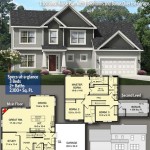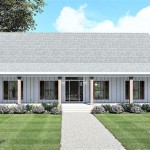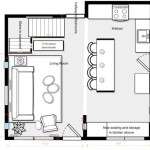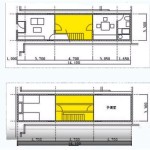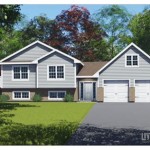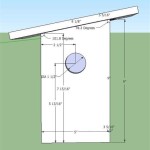Essential Aspects of a Simple Residential Building Floor Plan
A well-designed floor plan is the foundation of a functional and comfortable home. For simple residential buildings, it's important to consider specific aspects that optimize space, flow, and functionality.
1. Room Arrangement and Flow:
Consider the natural flow of movement through the home. Create a seamless transition between rooms, ensuring easy access to frequently used spaces like the kitchen and bathroom. Keep high-traffic areas open and spacious, while designating more private areas towards the rear of the house.
2. Efficient Space Allocation:
Determine the appropriate sizes of each room based on its intended use. Bedrooms should provide enough space for sleep and storage, while living areas should be large enough for furniture and entertainment. Optimize closet and storage spaces to minimize clutter and maximize living space.
3. Natural Light and Ventilation:
Maximize natural light by placing windows strategically. Orient rooms to receive ample sunlight during the day. Cross-ventilation is essential for air flow and a comfortable indoor environment. Plan for windows and vents to create a natural stack effect.
4. Kitchen Design:
The kitchen is the heart of many homes. Consider a triangular work zone that includes the refrigerator, sink, and cooking appliances. Allow for adequate counter space for preparation and storage. Determine the best placement for appliances and cabinetry to maximize efficiency and convenience.
5. Bathroom Functionality:
Bathrooms should be designed for privacy and functionality. Separate areas for the shower, toilet, and vanity create a more comfortable experience. Ensure there's enough space for essential fixtures and accessories, such as a mirror, towel rack, and storage shelves.
6. Exterior Access and Connectivity:
Plan for exterior access points to patios, balconies, or gardens. These areas extend the living space and provide natural light. Ensure convenient entry and exit points to outdoor spaces from the main living areas.
7. Structural Integrity and Safety:
Prioritize structural integrity by using appropriate materials and engineering techniques. Consider the local building codes and regulations to ensure compliance and safety. Plan for emergency exits and ensure adequate fire protection measures.
Conclusion:
A simple residential building floor plan requires careful consideration of space, flow, functionality, and comfort. By incorporating these essential aspects, you can create a well-designed home that meets the needs of its occupants while ensuring safety and structural integrity.

Small House Design 2024001 Pinoy Eplans Floor Plans

Simple 2 Y House Design With Floor Plan 32 X40 4 Bed Room Two Plans

Home Design Floor Plans Simple House Tiny

Est House Plans To Build Simple With Style Blog Eplans Com

House Plans How To Design Your Home Plan

Est House Plans To Build Simple With Style Blog Eplans Com

Simple Residential House Plan With Autocad File Cadbull

12 Examples Of Floor Plans With Dimensions

Residential Floor Plans Home Design House 134726 64ed397981fa3 Building Plan Blueprints Two Y

House Plans How To Design Your Home Plan

